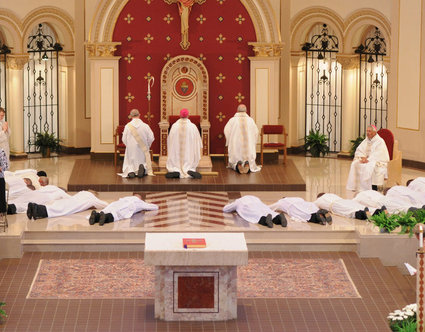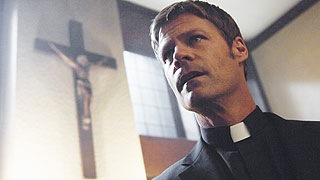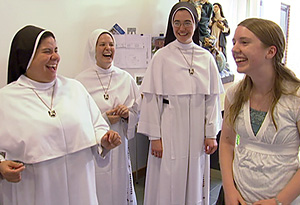Beverly Hills, California deacon and author Eric Stoltz often finds himself uttering the phrase, “Please don’t call me Father.”
Besides that gentle correction to well-meaning parishioners, Stoltz also uses the first five minutes of new baptism classes he leads to explain to his captive audience what a permanent deacon like himself does.
It’s not just Stoltz’s parish that could use more education on the diaconate. As the number of permanent deacons continues to rise across the United States, more Catholics are asking, “What exactly does a deacon do?”
Some Catholics think deacons can hear confessions, anoint the sick, and preside at Mass if a priest is unavailable, acting as kind of a substitute priest-all false. Others wonder why a man would choose to be a permanent deacon rather than a priest. Well, for one thing, a deacon can be married.
But some deacons–about 2 percent–are not married, and Stoltz is one of them. “I’ve had people tell me, ‘Well, you’re not married so why don’t you just go all the way?’ And I say, ‘Oh, you mean bishop?’?” he laughs. “I explain to them that I don’t have the vocation to be a priest.”
But why be a deacon? Joseph M. Donadieu of the Diocese of Trenton, New Jersey, who was already involved and active in his parish, faced that question. When Msgr. James P. McManimon, who started the permanent diaconate program in Trenton, asked him to consider the ministry, Donadieu asked McManimon what the difference was between an active layperson and a deacon. He received a simple response: “The grace of the sacrament.”
The 2010 figures released by the Center for Applied Research in the Apostolate (CARA) in May show that the ministry has taken a firm hold in the United States; here deacons account for a projected 17,047, or 46 percent, of the worldwide total of 37,203.
Brooklyn Deacon Greg Kandra, who writes about the diaconate on his Beliefnet.com blog “The Deacon’s Bench,” says that the reestablishment of the permanent diaconate after 1,200-plus years of inactivity was one of the greatest success stories to emerge from the Second Vatican Council.
“It’s a vocation that has just exploded,” says Kandra. “The day is fast approaching when the most familiar face in a parish could be a married man with children–the deacon.”
While references to deacons can be found in early church records, by the 20th century their role had faded from a full-time ministry to a mere transitional step on the path to the priesthood.
Reviving the permanent diaconate, a ministry in which deacons do not later become priests, was a hot topic at the Second Vatican Council.
“The bishops of the council saw [it] as a way of extending the ministry of the bishop in areas of society that the priests couldn’t get to,” says Deacon William Ditewig, past executive director of the U.S. Conference of Catholic Bishops’ formerly named Secretariat for the Diaconate. The permanent deacon would be an ordained minister working in the everyday world.
U.S. Catholic has a nice, long look at the diaconate in its December issue — and a few familiar names pop up:
More from Beliefnet and our partners


